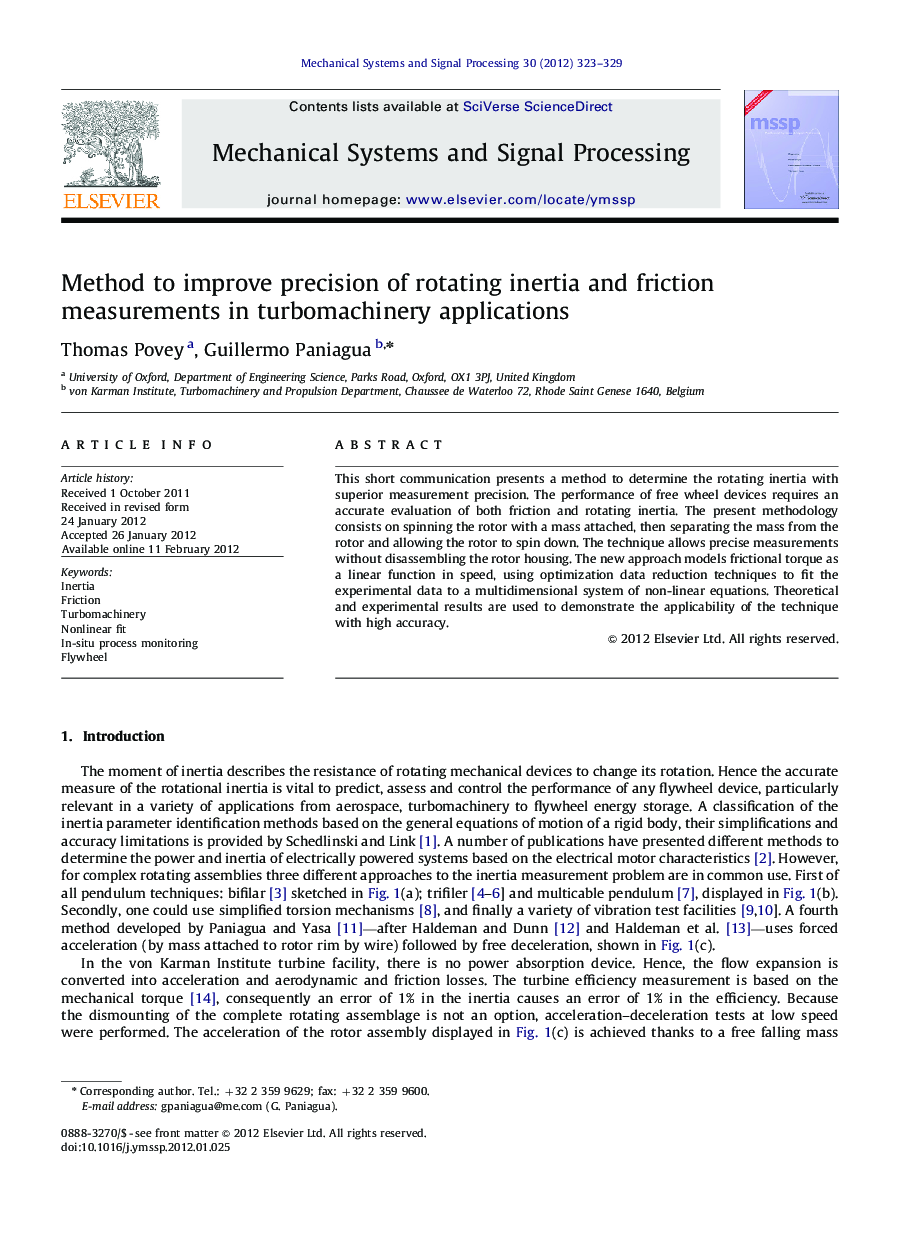| Article ID | Journal | Published Year | Pages | File Type |
|---|---|---|---|---|
| 561442 | Mechanical Systems and Signal Processing | 2012 | 7 Pages |
This short communication presents a method to determine the rotating inertia with superior measurement precision. The performance of free wheel devices requires an accurate evaluation of both friction and rotating inertia. The present methodology consists on spinning the rotor with a mass attached, then separating the mass from the rotor and allowing the rotor to spin down. The technique allows precise measurements without disassembling the rotor housing. The new approach models frictional torque as a linear function in speed, using optimization data reduction techniques to fit the experimental data to a multidimensional system of non-linear equations. Theoretical and experimental results are used to demonstrate the applicability of the technique with high accuracy.
► Rotating inertia from turbine rotor is obtained from acceleration–deceleration tests with high precision. ► Technique does not require dismounting of rotor. ► Friction modeled as linear function of rotational speed. ► Method demonstrated theoretically and experimentally. ► Nonlinear fitting of tachometer data allows accuracy better than 0.08%.
